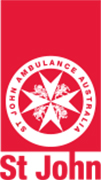Backyard Safety
Safe Play in BackyardsPlay is an essential part of growing up. Children learn and develop as they play. Providing a safe and creative play environment is the best way to help them grow.
Many childhood injuries happen in and around the home, especially in the backyard and garden. Falls from play equipment cause most of the injuries in backyards.
There are Australian Standards for playground equipment and trampolines. Equipment manufactured and installed to these Standards can reduce the number and severity of play related injury.
It is important for parents to ask the question “Does it comply with the Australian Standard?” before purchasing backyard play equipment items for their children. Look for the Australian Standard ‘tick’ logo.
HEIGHT OF PLAY EQUIPMENT
Falls are the leading cause of injury in playgrounds. Australian Standards provide the maximum fall height of play equipment – the distance from which a child could fall to the ground. The recommended maximum fall height for any play equipment is:
- 1m for children 0-3 years of age
- 1.8m for children 3-5 years of age
- 3m for children over 5 years of age
Equipment with a fall height greater than 0.6m above ground level should have a soft surface (impact attenuating material) under and around it to cushion any falls and prevent the risk of head or other serious injuries.
SURFACING
Asphalt and concrete are not a suitable surface underneath or around play equipment.
For play equipment in domestic backyards such as elevated cubby houses or forts, swings, slides, trampolines and rocking items, provide a soft surface under and around the equipment (impact area). Grass is suitable if well maintained, however can wear quickly in high use areas such as under swings and at the end of a slide. Consider installing playground mulch in these areas.
The impact area should cover the entire falling space which is the area under and around the play equipment onto which a child is likely to fall. The guideline for backyards is:
- 1.5m for 0-6 years
- 2.5m for older children.
SWINGS
- Ensure swing frames are securely anchored into the ground. It is recommended that surfacing such as mulch is used in the falling space of the swing.
- Swing seats should be made of a soft flexible plastic or rubber.
- Chain links can entrap and crush fingers. Look for a swing that uses a short link chain or chain covered with a plastic/rubber sheath.
- Ensure the connections of the swing at the seat are not sharp or have protruding parts which could injure the child’s hand or catch clothing.
TRAMPOLINES
Trampolines require active supervision. Parents and carers need to implement safety measures to reduce the risk of injury.
- The trampoline should comply with Australian Standard AS 4989. Look for the Australian Standard ‘tick’
- Safety pads are installed adequately to cover the frame and springs.
- Netted trampolines are recommended as fall hazards have been minimised
- Locate the trampoline on a flat, soft surface and secure it to the ground.
- Arrange a safety zone around the trampoline of 2.5m for open trampolines and 1.5m for enclosed trampolines.
- Make sure there is a clearance of 5 metres above the trampoline bed.
- Do not let children access the trampoline by using chairs, ladders or planks.
Safe use of trampolines:
- Allow only one child at a time
- Provide constant adult supervision.
- Older children need firm guidelines on proper use of the trampoline and skill development.
- Teach your child to jump in the centre of the mat and to focus their eyes on the trampoline to help to control bounce.
- Teach your child to climb on and off the trampoline rather than jumping off.
- Regularly check the condition of the trampoline frame, springs and bed for tears, rust, detachment and general weakening of the structure.
CUBBY HOUSES
A cubby house is great for imaginary play. When purchasing and/or installing a cubby house consider the following:
- A cubby house set up at ground level reduces the risk of falls
- The design and location of the cubby house should not allow children to climb onto the roof or surrounding structures
- If the cubby house is elevated or has climbing equipment or a slide, then a falling space with soft surfacing is recommended
- To avoid head entrapment, gaps between vertical rails should measure less than 89mm for metal or plastic rails, or less than 75mm for timber rails
- Ensure that there are no sharp edges or splinters
- Do not use CCA or creosote treated timber
WATER SAFETY
Water play is fun and can be provided in a variety of ways.
- Supervise children at all times when they are in or around the water
- Always stay within arm’s reach of your child when they are in water
- Learn basic first aid and resuscitation
- Keep pool gates closed at all times
- A pool fence is required for portable pools that can hold more than 30cm of water
- Cover garden ponds with wire mesh
- Empty containers such as buckets and wading pools when not in use
SAFETY WITH DOGS
Dogs are wonderful pets however they are responsible for some serious injuries to young children.
- Always supervise children near dogs
- Show children how to behave with dogs
- Choose a dog breed suitable for children
- Keep dog bowls out of reach
FINAL REMINDER:
- Separate play areas from driveways
- Supervise children around vehicles
- See if children are near the vehicle before you go
SAFE BACKYARD PLAY
Keep the backyard clear from rubbish and remove any trip hazards
- Keep tools, equipment and chemicals locked away
- Choose play equipment that has the Australian Standard ‘tick’ logo
- Position play equipment in an area that is shaded, easily supervised and accessible
- Ensure all play equipment and bikes are appropriate to a child’s age, size and developmental stage
- Ensure play equipment is strong, sturdy and securely anchored.
- Secure any ropes top and bottom so they are not slack and cannot form a noose
- Play equipment should not have sharp edges, splinters or protruding parts that could pierce skin, or tangle in a child’s hair or clothing
- Regularly check play equipment for wear and tear
- Remove loose cords from children’s clothing so they don’t get caught in equipment
- Supervise young children on and around play equipment at all times
- Fence play areas off from driveways and garages/carports
- Ensure pool gates are self-closing, self-locking and well maintained. Regularly inspect fence panels and gates and leave nothing nearby for a child to climb
- Remove any plants that may harm or cause illness in children
- Supervise animals near children at all times
- Don’t leave lawn mowers and electrical equipment unattended







